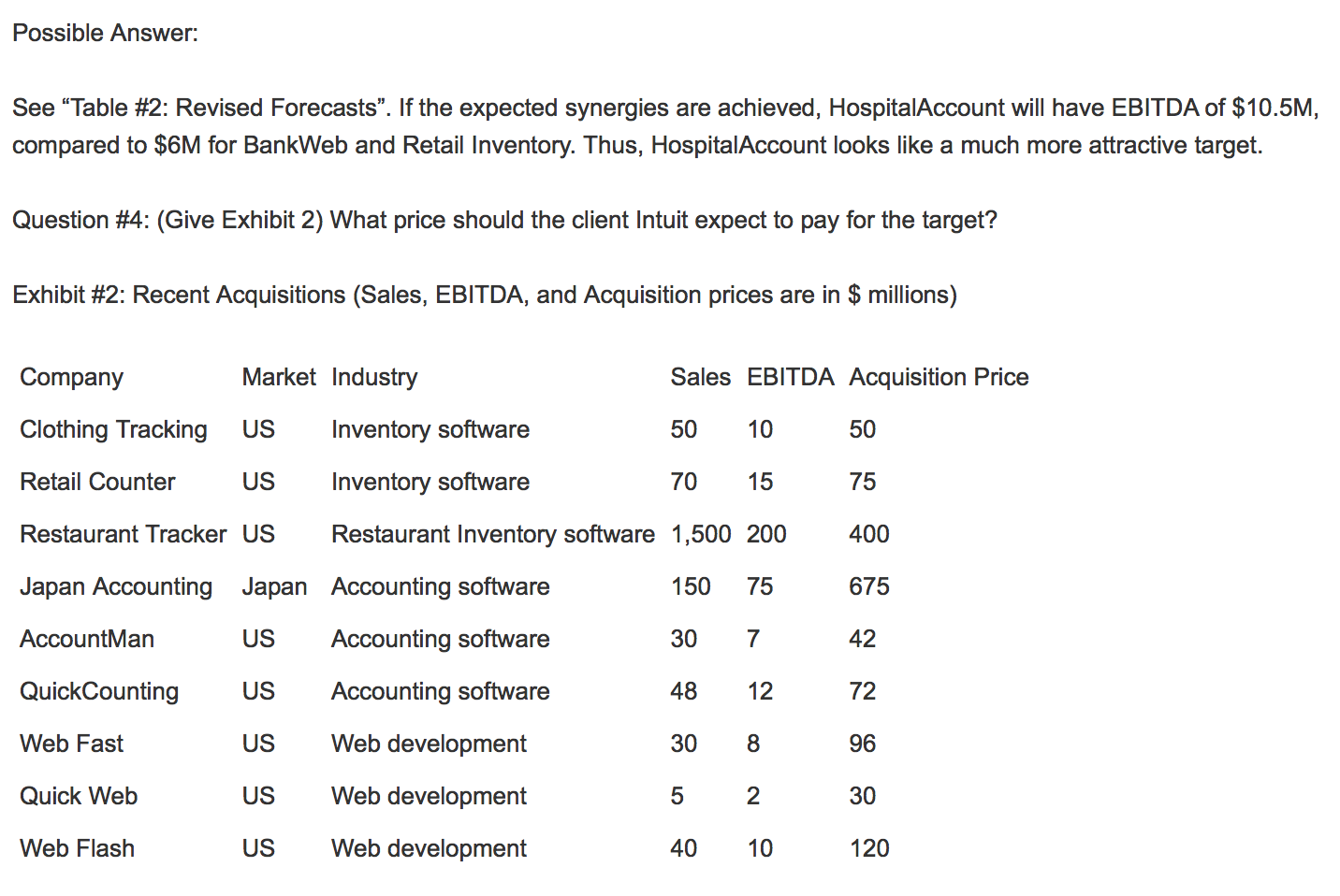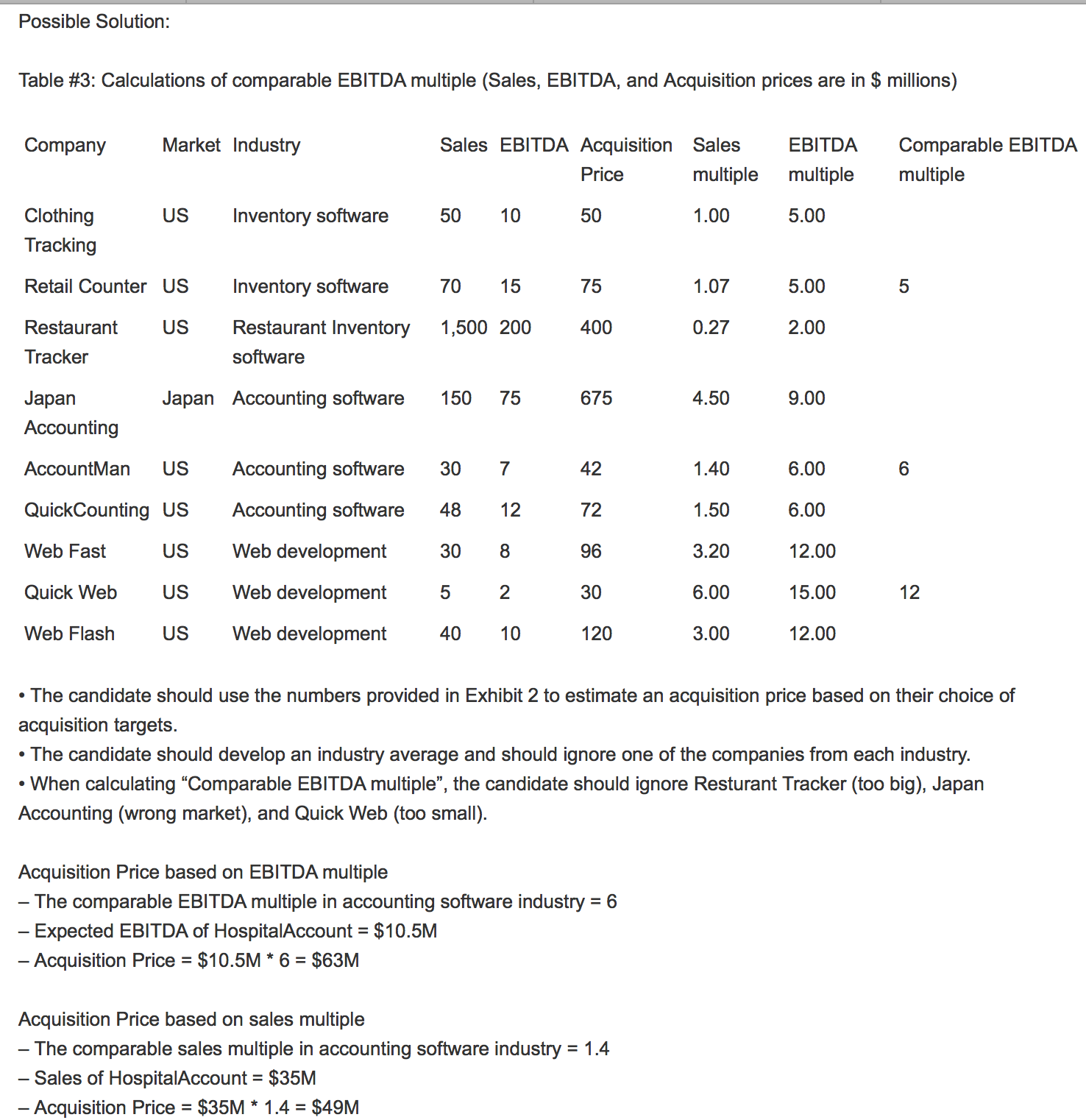I have a question on ebitda multiple in M & A case. I am quite confused on how to do the multiple method in solving for fair price.. Could I get step by step approach in solving via a multiple method?
Regarding this case, is acquisiton price same as enterprise value? Which metrics did they use to determine whether to disregard ebitda for some companies?(Resturant Tracker (too big), Japan Accounting (wrong market), and Quick Web (too small)) Also, in M & A case, do I also look at sales multiple also like the solution below? Thanks.

